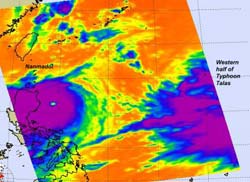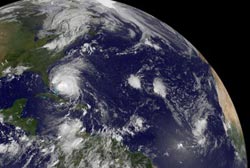Of the 129 species of marine mammals on Earth, including seals, dolphins and polar bears, approximately one-quarter are facing extinction, the study said.”It's…
Remember frozen iguanas falling from trees during Florida’s 2010 record-breaking cold snap? Well, a new study led by scientists at the University of Miami (UM)…

NASA's Aqua satellite provided two different perspectives of this supertyphoon: a visible and an infrared. The Moderate Resolution Imaging Spectroradiometer…
At the Stevens Center for Maritime Systems (CMS), ocean researchers manage a large network of submerged sensors throughout the New York Harbor region, from the…

Meanwhile, far in the eastern Atlantic Ocean a tenth tropical depression formed. One satellite image captured both storms and shows the tremendous difference…
Higher Order Poincare Sphere model developed by physicists with the Institute of Ultrafast Spectroscopy and Lasers tracks movement of complex forms of light.Physicists with the Institute of Ultrafast Spectroscopy and Lasers (IUSL) at The City College of New York have presented a new way to map spiraling light that could help harness untapped data channels in optical fibers. Increased bandwidth would ease the burden on fiber-optic telecommunications networks taxed by an ever-growing demand for audio, video and digital media. The new model, developed by graduate student Giovanni Milione, Professor Robert Alfano and colleagues, could even spur enhancements in quantum computing and other applications….